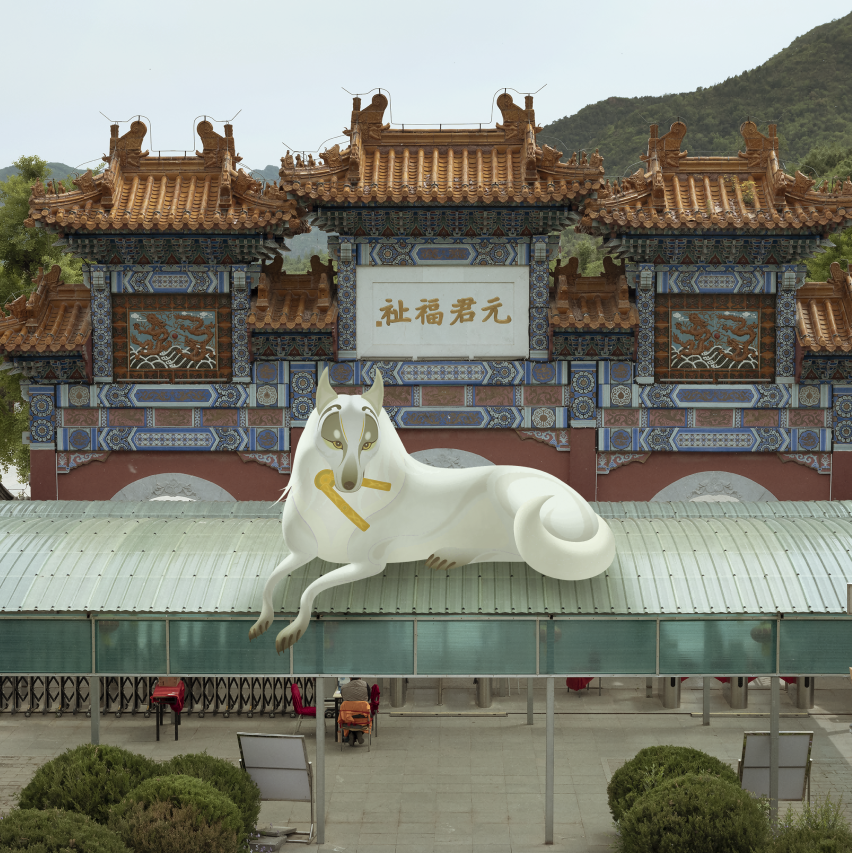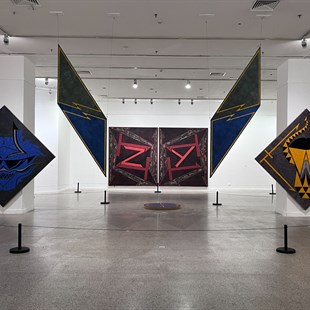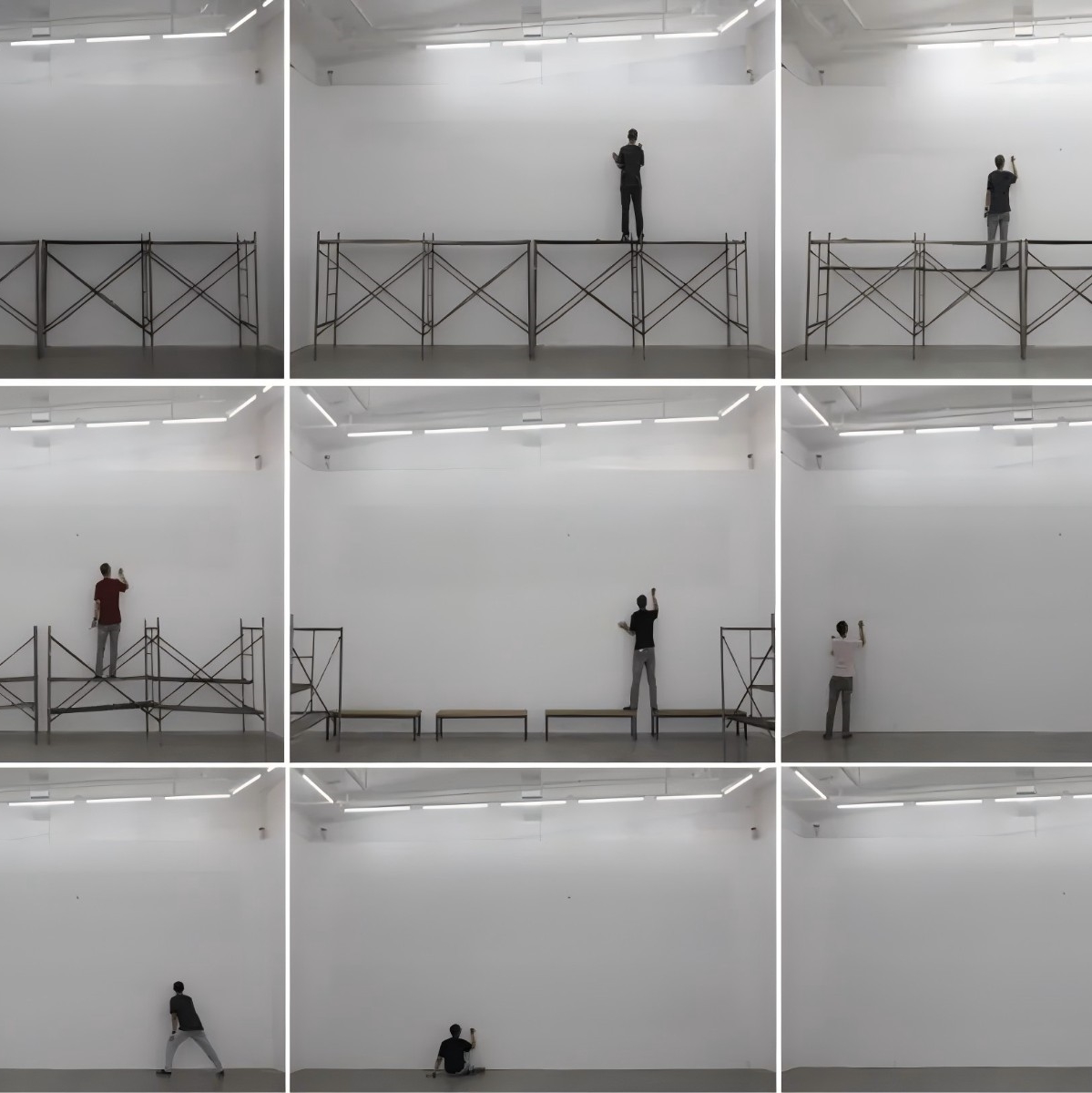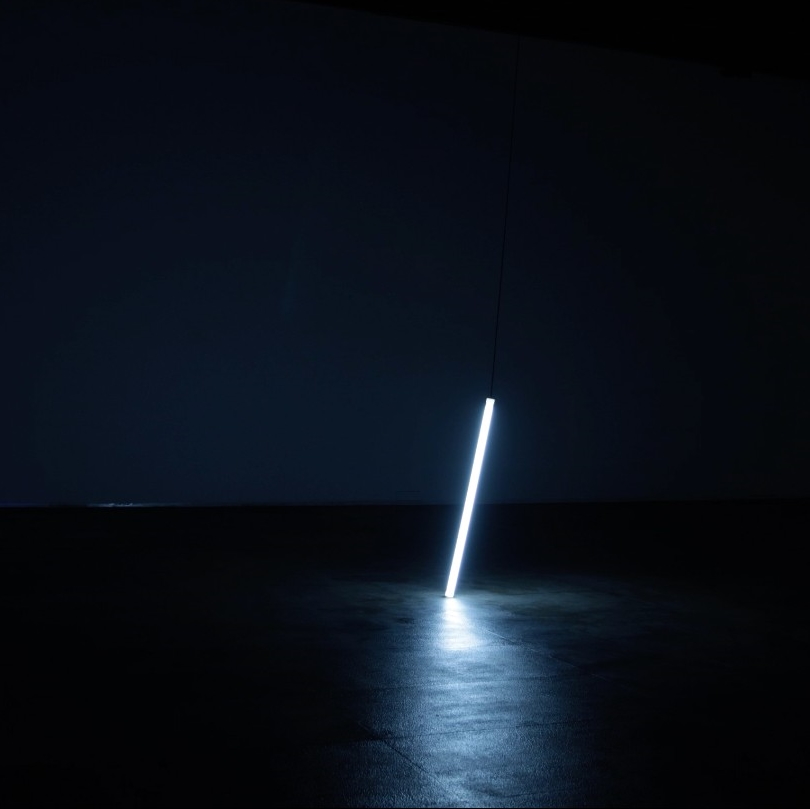Edward Kienholz was born in Fairfield, Washington in 1927. He grew up on a farm
in the eastern part of the state, learning carpentry and drafting and mechanical skills in his youth. He studied at Eastern Washington College of Education and, briefly, at Whitworth College in Spokane, but did not receive any formal artistic training. After a series of odd jobs, such as a nurse in a psychiatric hospital, the manager of a dance band, a used car salesman, a caterer, a decorator and a vacuum cleaner salesman, Kienholz settled in Los Angeles, where he became involved with the arts.
Together with other avant-garde artists in the area, such as the youthful Michael Bowen[1], he opened art galleries. In 1956 he founded the NOW Gallery. In 1957 Kienholz started the Ferus Gallery with Walter Hopps. In 1961 he completed his first installation, "Roxys", which caused a stir at the documenta 4 exhibition in 1968.
Despite his lack of formal artistic training, Kienholz began to employ his mechanical and carpentry skills in making collage paintings and reliefs assembled from materials salvaged from the alleys and sidewalks of the city. In 1960 he withdrew from the Ferus Gallery to concentrate on his art, creating free-standing,
large-scale environmental tableaux. Kienholz’s assemblages of found objects—the detritus of modern existence, often including figures cast from life—are at times vulgar, brutal, and gruesome, confronting theviewer with questions
about human existence and the inhumanity of twentieth-century society.
Because of their satirical and antiestablishment tones, his works have often
been linked to the funk art movement based in San Francisco in the 1960s.
A 1966 show at the Los Angeles County Museum of Art drew considerable controversy about his assemblage, Back Seat Dodge ‘38 (1964), said by some in the press to be pornographic or at least vulgar.
In the early 1970s, Kienholz received a grant that permitted him to work in Berlin with his wife and collaborator, Nancy Reddin, whom he met in 1972 in Los Angeles. Their work has been widely acclaimed, particularly in Europe. His most
important works during this period were the Volksempfängers (radio receiving apparatus
from the National Socialist period in Germany). In 1973 he was guest artist of the German Academic Exchange Service in Berlin, and in 1976 he received a Guggenheim Fellowship. In 1977 he opened "The Faith and Charity" in Hope Gallery with Nancy Reddin. From the time of the exhibition Die Kienholz-Frauen at the Galerie Maeght in Zurich, 1981, his work was co-authorized with his wife. In 1973, Kienholz and Reddin moved from Los Angeles to Hope, Idaho and for the
next twenty years they divided their time between Berlin and Idaho.
Kienholz died in Idaho in 1994. He was buried upright in the passenger side of a
brown 1940 Packard coupe with a bottle of wine, a deck of cards, and the ashes
of his dog Smash in the trunk.
Edward & Nancy Kienholz
时间: 2007.4.20




























